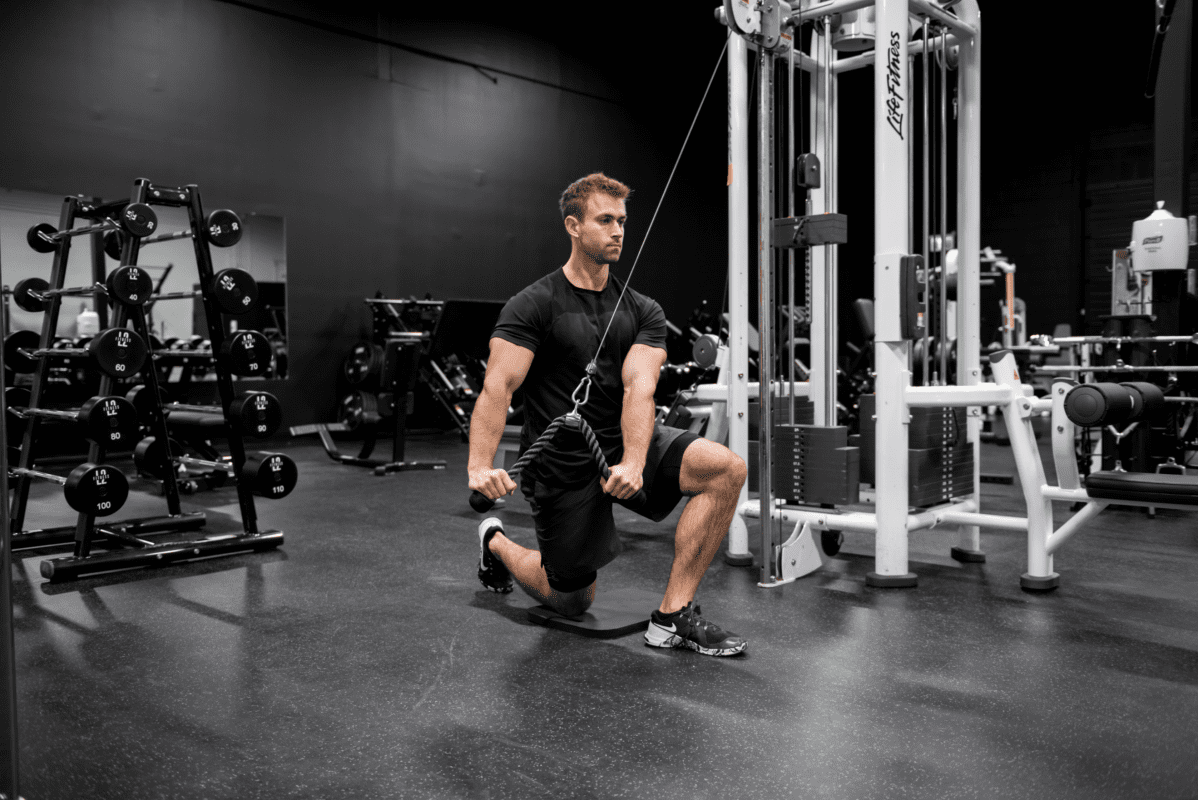I think that it’s safe to say that the majority of people still believe that the “core” refers to our anterior (front-side) abdominal muscles, more specifically the rectus abdominis, obliques, and transverse abdominis (TVA). I believe that we need to expand the definition of core training into two major functions:
- The core is used to stabilize and position both the thorax and pelvis and assists in providing internal pressure to our system.
- The core acts as a way for us to transfer force between our lower and upper body.
These definitions vastly expand the list of core muscles involved and forces us to look at core training from a movement perspective rather than from each individual muscle. Further to that point, we have to understand how the joints of the body are supposed to optimally function in order to support these movements. The joint-by-joint approach, first laid out by Michael Boyle in Advances in Functional Training, describes how each joint of the body requires either stability or mobility to optimally function. Working from the bottom up that looks like the following:
- Ankles – Mobility
- Knees – Stability
- Hips – Mobility
- Pelvis and L-Spine – Stability
- T-Spine – Mobility
- C-spine – Stability
- Scapulae – Stability
- Gleno-humeral – Mobility
Our bodies are stacked alternating between mobility and stability. If we lack mobility in one joint we will try to make up for the lack of movement in the joint above or below. Vice versa, if we lack stability at a joint our bodies will try to find stability in neighboring joints leading to decreased mobility. But wait! There’s a catch! Each joint requires some level of stability in order for the core to optimally perform. For example, someone may perform a deep squat. At the end range of their squat they feel a sharp pinch because their femur (hip bone) has slid forward into the hip capsule due to joint laxity (instability). Performing mobility exercises to an already unstable system would seem counterintuitive. Each joint requires a certain level of stability for mobility to be beneficial. Thus enter the age of anti-movement core training.
1. Anti Extension Exercises
The goal of this exercise category is to resist extension of the spine, think arching your lower back. This is a foundational anti-movement skill required for building a strong, efficient squat and deadlift. If we can maintain a stable core position we will be able to efficiently transfer power from our lower body to our upper body. Master the basic and progress only when ready.
Planks
Works on both anti-extension capabilities of the core, plus stability and mobility at the shoulder blade and shoulder joint respectively.
Progressions: Plank, Tall Kneeling Ball Rollout, Valside Body Saw, Ab Wheel Rollout.
Cues: Keep sternum tucked to pelvis, squeeze glutes, keep a neutral spine and breathe.
2. Anti Rotation Exercises
This exercise category includes any exercises that resist rotation of the lumbar spine. You will notice quickly that your glutes have a great deal of responsibility for stabilizing your lower back. If they are not engaged it will be nearly impossible to maintain a neutral pelvic position.
Anti Rotation Holds
These work by developing stability at the spine and the shoulder girdle.
Progressions: Supine Hold, Tall Kneeling Hold, 1/2 Kneeling Hold, Standing Hold.
Cues: Keep rib cage down, shoulders down and back with arms extended, squeeze glutes, stay tall keep a neutral spine throughout and breathe.
Chops & Lifts
Works on stability at the hips and lumbar spine but promotes rotational mobility at the t-spine.
Progression: Tall Kneeling, Inline Half Kneeling, Split Stance, Standing Dynamic.
Cues: Keep hips square, pause with thumbs at chest height between each movement, stay tall and keep a neutral spine throughout and breathe.
3. Anti Lateral Flexion Exercises
This exercise category is aimed at preventing lateral flexion or “side-bending”.
Carries
Works on postural alignment, full body stability and grip strength. You can get really creative with carries as long as good posture is maintained throughout the exercise.
Progression: Anti-Lateral Flexion Cable Holds, Suitcase Carry, Farmer Carries.
Cues: Stay upright with the rib cage down, do not cross over feet, stay tall and keep a neutral spine throughout and breathe.
4. Glute Activation Exercises
Your glutes have a direct impact on lumbo-pelvic stability. More often than not a lack of glute engagement results in poor core dysfunction. That being said, poor core engagement also results in underactive glutes. Rather than debating whether one is the cause of the other, just train both. Focus on the quality of contraction rather than the load moved, and try to prevent activation of supporting hip structures. Example: quads, hamstrings, QL, TFL, etc.
Exercises: Glute bridge holds, lateral band walks, bird dogs, side bridge clamshell holds, banded hip thrusts, frog pumps.
At the end of the day core training is rather simple. You want to ensure that a stable posture is emphasized over increasing exercise difficulty, and you always want to remember to BREATHE.
By Anthony Harder








